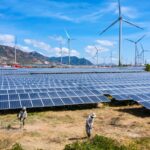Textiles and fibers play a critical function in the clinical and health care area; consequently, fabrics have actually seen fast developments recently.
Biomedical fabrics are technological fabrics created utilizing all-natural or artificial fibers for health, treatment and avoidance. These coarse frameworks are mostly utilized in filters, implants and medical dressings.
These fabrics are extremely appealing in the Asia-Pacific area as a result of the boost in the senior populace, the development of clinical facilities and the boost in clinical tourist. The major factors for biomedical fabric fostering in the health care market are transplant-related difficulties such as emotional and physical problems, denial, immunosuppressants and contributor body organ lacks.
As a result, physician are utilizing man-made options such as man-made options, called prostheses, to change body components to conquer these issues.
The boost in amputation prices as a result of roadway mishaps has actually advertised the improvement of biomedical fabrics to enhance the feature of prosthetics.
As an example, researchers in Singapore just recently created a 3D published energetic textile called Robofabric for clinical usages. It’s a soft, wearable textile that can promptly develop into a clinical tool or soft robot component, such as rehab devices, joint assistance or arm or legs of a drone.
Examining why biomedical fabrics acquire interest in the Asia-Pacific area
According to information from Allied Marketing research, the biomedical fabric market is approximated to get to $30.3 b from $16.6 B in 2022, with a CAGR of 6.2% from 2023 to 2032.
The research study even more mentions that the Asia-Pacific area is anticipated to control the biomedical fabric sector. This is credited to the boost in the maturing populace in the area, which consequently advertises the need for biomedical fabrics in orthopedic implants, supporting devices and aged treatment items. This reveals that the projections in the research study follow existing sector fads.
A research study released by the Asian Advancement Financial institution additionally mentioned that in between 2010 and 2050, the senior populace in Asia will certainly triple, concerning 1.3 billion individuals. Furthermore, Asia is a worldwide clinical tourist center since the expense of clinical treatments in the area is 50% to 80% less than that in Western nations. As a result, the Asia-Pacific area is anticipated to end up being a prospective market for biomedical fabrics in the coming years.
According to the United Nations, the health care sector produces concerning 4.7 billion lots of waste annually, causing 4% of worldwide carbon discharges. Regarding one-third of these discharges are created from array 3 resources, suggesting that these discharges are not created by health centers or centers themselves, however by clinical products, fabrics, medications, and various other products and solutions utilized by the wellness market.
To conquer these difficulties, biomedical fabrics are being embraced in the health care area as they are created to be sanitized and recycled, as an example, medical dress, drapes and implantable materials decrease single-use plastic waste.
In addition, some sophisticated biomedical fabrics are made from eco-friendly or compostable fibers that decrease lasting ecological effects when taken care of. As an example, along with silk, cotton, and regrowed cellulose such as Lyocell and Viscose, clinical fabrics are constructed from all-natural fibers, such as eco-friendly polymer fibers constructed from collagen, alginate, and chitin.
Furthermore, clever fabrics incorporated with sensing unit innovation, in addition to injury recovery and anti-bacterial homes, decrease the demand for various other therapies, which consequently lowers total usage and waste of clinical items.
Discover the most recent advancements in biomedical fabrics
Textiles and fibers play a critical function in the clinical and health care area; consequently, fabrics have actually seen fast developments recently. As an example, silicon fibers are presently utilized in the manufacturing of fabrics that are incorporated in eco-friendly implantable tools to enable them to be positioned securely in the body.
On the various other hand, nonwoven fabrics are needed when making implants for cells design. Nonwoven fabrics acquire a high allure in clinical applications as a result of their cost-effectiveness and their viability to medical dress, drapes and injury dressings, such as items for operations.
Because of this, the substantial rate of manufacturing centers for nonwoven materials in Oriental nations consisting of Taiwan, China, India, South Korea, Indonesia and Japan is increasing. Newest research study from the Japanese Ministry of Economic Situation, Profession and Market and all Japan Nonwoven Organizations reveals that manufacturing of nonwoven materials in Asia got to 6.935 billion bunches in 2020, a boost of about 18%.
Furthermore, fibers are progressively utilized to boost clinical balloons that aid cosmetic surgeons deal with back injuries and fell down arteries by giving accurate assistance throughout surgical treatment. In addition, tools constructed from fabric fibers can be dental implanted right into the body to supply restorative medicines in a regulated fashion to make certain that the medicine is launched at the appropriate rate and at a particular duration, consequently boosting therapy end results and decreasing adverse effects.
Consequently, all these developments in biomedical fabrics are anticipated to be rewarding possibilities for future market development and opening in the Asia-Pacific area.
.









